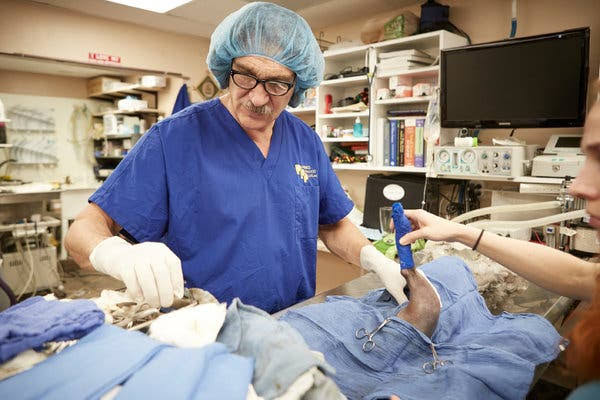Operation Wild and Dr. Jeff: Two Approaches to Veterinary TV
When it comes to television shows about veterinary care, audiences today have no shortage of options. Among the most compelling are Operation Wild and Dr. Jeff: Rocky Mountain Vet, two programs that take drastically different approaches to telling the stories of animals in need and the professionals who dedicate their lives to treating them. While both fall under the umbrella of veterinary reality TV, the style, tone, and focus of each highlight just how varied this niche genre can be.
Operation Wild, a BBC production that later found international distribution through PBS and other outlets, takes a sweeping, global approach. The series places viewers inside some of the most advanced veterinary surgeries in the world, often on an almost cinematic scale. Each episode highlights groundbreaking medical techniques—think 3D-printed prosthetics for elephants, or pioneering brain surgery for lions—that push the boundaries of what animal medicine can achieve. The tone is clinical yet inspiring, celebrating not only the patients but also the technology and human innovation behind these medical marvels.
In contrast, Dr. Jeff: Rocky Mountain Vet, airing on Animal Planet, trades high-tech spectacle for raw, personal storytelling. The show follows Dr. Jeff Young and his staff at Planned Pethood Plus, a Denver-based clinic that has become something of a cult favorite among viewers. Here, the focus is not on cutting-edge procedures performed in state-of-the-art facilities, but on the everyday struggles of pets and their owners, as well as Dr. Jeff’s unwavering mission to provide affordable care. Episodes often highlight the financial and emotional realities of veterinary work—tough conversations, community outreach, and the relentless drive to treat as many animals as possible, regardless of their owners’ ability to pay.
This divergence in style reflects two larger philosophies about what audiences want from veterinary television. Operation Wild appeals to the fascination with science and innovation, showing the viewer what’s possible when veterinary medicine intersects with advanced research and global collaboration. Its global scope allows audiences to travel from African wildlife reserves to urban zoos, creating a sense of scale that feels almost documentary-like.
Meanwhile, Dr. Jeff embraces the intimate, the relatable, and the human. Viewers are invited into the waiting rooms, operating tables, and often chaotic days of a community clinic. It’s gritty and less polished, but therein lies its charm. The show thrives on its emotional pull—the rescued stray given a second chance, the elderly couple scraping together funds for their beloved cat, the staff who burn out but return the next day anyway because the work is never done.
Both shows also shine a light on the expanding role of veterinarians in society. For Operation Wild, it’s about innovation on a global scale, suggesting that veterinary medicine is a vital field not just for pets but for endangered species and the health of ecosystems. For Dr. Jeff, the message is equally profound: veterinary care is a form of social service, one that bridges compassion, access, and advocacy for animals that might otherwise fall through the cracks.
Critics have praised both programs, though for different reasons. Operation Wild is often noted for its educational value, helping demystify advanced surgical procedures and reminding viewers that veterinary science is constantly evolving. Dr. Jeff, meanwhile, has been lauded for its authenticity and its willingness to show the messy, emotional, and sometimes heartbreaking side of animal care—elements that are often smoothed over in more polished productions.
The popularity of both shows also speaks to a broader cultural fascination with animal-centered programming. From The Incredible Dr. Pol to Bondi Vet, television has increasingly found an eager audience for stories about veterinary work. Part of the appeal lies in the universal connection humans feel with animals, and part of it stems from the way these shows highlight compassion in action—something audiences often crave amid the noise of contemporary television.
Yet the differences between Operation Wild and Dr. Jeff suggest that this is not a one-size-fits-all genre. Some viewers are drawn to the extraordinary and the high-tech, while others prefer the grounded and emotional. By existing side by side, the two series not only broaden the spectrum of what veterinary shows can be, but also reinforce the idea that veterinary medicine itself is a multifaceted world—equal parts science, compassion, and perseverance.
In the end, whether viewers tune in to watch a rare surgical procedure on a tiger in Asia or a struggling family seeking help for their puppy in Denver, both Operation Wild and Dr. Jeff remind us of the same truth: that the bond between humans and animals is powerful, universal, and worth every effort to protect.
